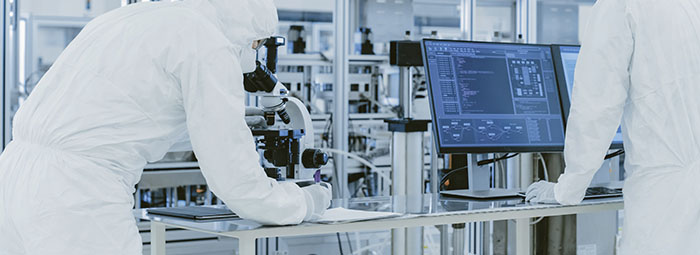
©2021 This excerpt taken from the article of the same name which appeared in ASHRAE Journal, vol. 63, no. 7, July 2021.
About the Authors
Jorge Bazan, P.E., is a senior mechanical engineer at Intel Corporation in Hillsboro, Ore. Ralph Cohen, P.E., specializes in facility systems energy reduction for high-tech manufacturers at Ralph M. Cohen Consultancy in Portland, Ore.
The operating cost, industrial city water consumption and carbon footprint were reduced for three systems in an existing semiconductor factory. Measures used include retrofitting chiller variable speed drives and re-piping air compressors to use warmer chilled water return rather than cooler chilled water supply. Elements of this project can be implemented in facilities with chillers and simultaneous heating loads.
High outdoor air heating and cooling loads, coupled with significant compressed, oil free air manufacturing equipment cooling load and deionized water heating requirements (specifically, supply to reverse osmosis system), provide semiconductor manufacturing facilities (often called a FAB) a significant opportunity to recover heat from chillers and air compressors. This heat can then be used to eliminate boilers for most HVAC and deionized water heating.
By 2004, the authors had sufficient experience with “intensive heat recovery,”1 in a FAB at this site, which led to “intensive heat recovery” becoming the plan of record for the company’s new microprocessor manufacturing facilities worldwide. More recently, a hard look was taken at facilities predating 2004 to see if some or all of the plan of record attributes could be retrofit.
Although the example in this article is a semiconductor manufacturing facility, whenever there are high cooling loads and simultaneous heating loads, it may be cost effective to configure or reconfigure the systems to take advantage of the waste heat from the chilled water system or cooling from industrial city water used in processes.
The general approach in this study was to understand and analyze the existing design. Then, they would determine how systems could be modified to replicate plan of record system design features such as heat recovery, reset strategy, application of variable speed drives, utilization of air compressor heat, etc. Or they could implement an innovative solution such as configuring an existing chiller to operate as a heat pump through base loading and elevating the condenser water temperature to provide heat for a process load.
A separate study was done to consider implementing additional chiller heat recovery to provide the HVAC heat needs and reduce boiler load for this factory. The separate study’s results are not addressed in this article.
Original Configuration
The chilled water plant (Figure 1) was commissioned in 1999; an expansion was commissioned in 2012.
Three principal systems were impacted by the retrofit:
- Chilled water provided by centrifugal chillers and associated cooling towers with approximately 12,000 ton (42,190 kW) peak cooling load. For reference, the chilled water loop is configured with primary-secondary pumping, and all chillers are piped in parallel.
- Compressed air with 2,400 hp (1790 kW) average power consumption, cooled by chilled water entering at 39°F (3.9°C), requiring a minimum of 421 tons (1480 kW) of cooling.
- Industrial city water for the deionized/reverse osmosis makeup water system flowing an average of 1,430 gpm (325 m3/h); two (each) plate-and-frame heat exchangers with heat provided by the condenser water loop maintained at a minimum of 73°F (22.8°C) leaving all cooling towers. Since condenser water was used to heat industrial city water, the condenser water loop temperature setpoint was governed by the deionized water plant, preventing a reduction below the value given above.
Read the Full Article
ASHRAE Members have free access to the full-text PDF of this article as well as the complete ASHRAE Journal archives back to 1997 in the Free Member Access Area.
Non-members can purchase features from the ASHRAE Bookstore. Or, Join ASHRAE!
Return to Featured Article Excerpts
Return to ASHRAE Journal Featured Article Excerpts